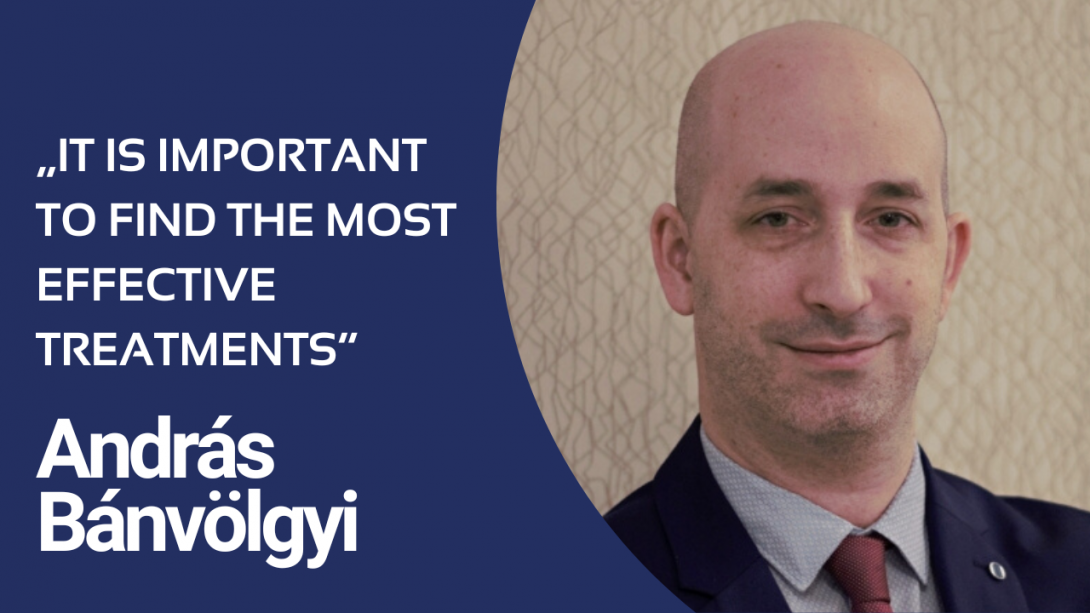
In September, the Dermatology and Immunology Group was named the best group of the month. The group researches melanoma, lupus, and the autoimmune skin disease hidradenitis suppurativa, but also many other topics. We talked to its leader, András Bánvölgyi.
András Bánvölgyi joined the Centre for Translational Medicine two years ago with his PhD student, Fanni Meznerics. In their second year, the group expanded with another student, and this year, more colleagues joined. "Encouraged by the program's success, I wanted as many people as possible to get involved. This is beneficial for both us in the Department of Dermatology, Venereology and Dermatooncology and for the students. This year, we have already formed an independent group. We currently have eight students, and work as a team with my co-group leader, Norbert Kiss, junior supervisor and SMA Fanni Meznerics, and SMS Anna Lengyel. The team is also fortified with exceptional clinicians and researchers, such as Lajos Vince Kemény, Bernadett Hidvegi, Marta Medvecz, and Kende Lőrincz.”
The Dermatology & Immunology Group explores various topics related to dermatology and immunology. One example is the hidradenitis suppurativa, which is an autoimmune skin disease. It can cause inflamed, purulent, and painful nodules in the armpits or the groin area. The disease affects 1% of the population. One of the major centers for hidradenitis suppurativa is the Department of Dermatology, Venereology and Dermatooncology at Semmelweis University, and András Bánvölgyi is one of its internationally acknowledged experts.
"In our work, we have noticed that it takes a long time – on average, eight years – for the patients to get to the right experts and get proper treatment. In the meantime, their condition continues to deteriorate. The problem is that the symptoms of hidradenitis suppurativa are often mistaken for severe acne. We started working on it to facilitate an early diagnosis of the disease and, in turn, its effective treatment. It is also necessary to clarify how the disease can be effectively managed at each stage. The range is relatively large, including medication, immunological and surgical treatment. It is also worth combining these methods. It is important to find the most effective treatments, so we aim to determine the most optimal choice in each case.”
The group is also researching lupus, which has a form that only affects the skin. This research is led by the widely recognized expert Bernadett Hidvégi. This topic is important because there is no clear consensus on the best treatment for this disease. There are biological treatments for lupus, but their use is not yet widespread, and their effectiveness needs to be proven. If this is done successfully, biological therapies could be more widely applied. The group is also researching melanoma and modern imaging techniques. Teledermatology is also an attractive topic of theirs, and it is important to assess its effectiveness. If a reliable methodology can be developed, it could have a major role in the future.
Since the Dermatology & Immunology Group has many members, coordinating meetings is a major organizational task. The common solution was for everyone to rearrange their schedules to make the whole Wednesday free for meetings and to dedicate this day to the program.
(Szabó Emese)